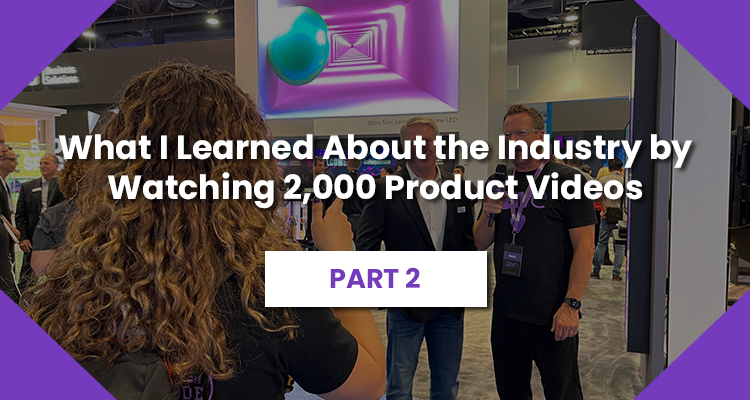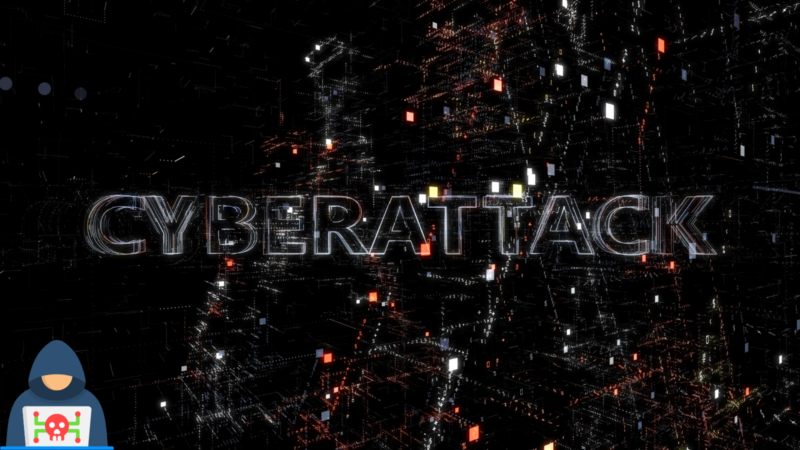Part 2: What I Learned About the Industry by (Not Attending ISE or InfoComm, But) Watching 2,000 Product Videos

Part 2: AV-Over-IP, Software-Based AV and AI
This is part 2 of an article about all the things I noticed from ISE and InfoComm this year, two shows to which I didn’t go, but as the editor in charge of video titling for rAVe [PUBS] for both, I did watch pretty much every video the team shot from both show floors, which was about 2,000 videos. It’s a pretty efficient way to digest an enormous amount of technology as shown and marketed on a trade show floor, and it’s given me a unique insight into what the industry is doing, collectively — particularly since the shows were only a few weeks apart this year. Here are the things that I noticed.
If you missed part one covering UCC and display technology trends, click here.
AV-Over-IP
In case anyone had any doubts, I think we can call AV and IT officially converged. AV signals are transported digitally now, and the competition is just over how they are transported. Since the last trade show I went to in person, IPMX, an open AV-over-IP standard from the AIMS Alliance, has come out as another major contender. I also saw a couple solutions for 8K over IP for the first time, though truly only a couple, versus the many, many solutions that were presented for 4K over IP.
There were other ways in which The Network felt way more prevalent at the shows than ever before, aside from just various compression protocols. I think every major manufacturer has now released a remote monitoring solution so their products may be managed and monitored remotely by IT staff. It left me wondering what the point was — are IT departments really going to download a zillion different pieces of software for every brand of product they have to manage? Just create an open API already and call it a day. I must have seen at least 15 proprietary ones. There were also multivendor platforms from AVI-SPL, Utelogy and others. One newer company called Xyte was marketing itself towards manufacturers, offering remote device management and the ability to sell AV UCC products “as a service.”
Network-based solutions have also reached other AV verticals that I hadn’t seen as much AV-over-IP product focus on. For example, there were numerous solutions for DMX network control. I also saw more IP-based control of rental/staging devices, from loudspeakers to chain hoists to moving-head light fixtures to audio control consoles. There were a lot — A LOT — of solutions to convert NDI sources to/from network devices, and many, many IP-controllable PTZ cameras. I also saw more consoles, both for show control or command/control, that included touch displays with custom-design GUIs instead of or in addition to the traditional consoles with physical knobs and buttons.
Software-Based AV Solutions
Keeping in the vein of AV/IT convergence, there was more software on the floor than ever before, and not just supporting products. There were numerous examples, from large, existing AV manufacturers of software products that will (theoretically) solve what has previously only been solved by AV hardware. These products are very new, so it remains to be seen what challenges they will present during integration into complex systems, but their very existence represents a monumental shift for the industry.
There are a couple of reasons why this is happening now, but supply chain woes are probably the biggest driving factor for the timing. Audinate’s Dante protocol has been a driver for shifting AV signals onto the network in the past decade, and now with Dante AV, the company’s products can move both audio and video signals across networks. But Dante products have been hard-hit by the semiconductor shortage, a problem felt far and wide by its many manufacturing partners and those partners’ dealers. To help, Audinate has worked hard to reconfigure existing products that use alternative chips or other parts in short supply. But they also have several software-based products that can do a lot of the work of their hardware products, most notably Dante Studio.
Audinate isn’t the only AV manufacturer that now has software-based versions of traditional hardware products. Perhaps the biggest news in this area is Crestron releasing a software version of its DM NVX platform for AV-over-IP.
Macnica demonstrated a software-based IPMX receiver
Kramer purchased the software-based UC platform Quicklaunch
Datapath’s Aetria software-based system for control rooms
QSC’s AV operating system
T1V’s Thinkhub Cloud
SMART’s software version of a collaboration platform
Software also makes some functions easier and less of a specialty, primarily programming and user interface design for control. On the show floors, there were many examples of software that allowed for customization via drag-and-drop or “configurable” interfaces — without requiring a programmer — for many different verticals. I didn’t hear anyone use this term to describe these products, but the rest of the world has given us a name for this kind of thing that the industry should start using: no-code software (or low-code, in some cases). There were examples from Kramer, AudioControl (many audio companies showed similar products for configuring amplifiers), Liberty AV, NovaStar and Datapath, among many others.
The proliferation of software was also exemplified by how many booths you found the company Appspace coexhibiting with at both ISE and InfoComm. Appspace is a hardware-agnostic software solution targeting a various AV verticals — hospitality, digital signage and a variety of corporate technology needs. Its product is interesting for corporate, given what feels like convergence between a few technology problems that have been previously solved by separate solutions, including employee communications, digital signage, security access, collaboration/conferencing and technology room/area management (room booking and hotdesking).
Cybersecurity, or Lack Thereof
Considering the focus on the network, I was surprised to not see much focus on cybersecurity. The last few years have shown us that network-connected devices that aren’t “traditional network devices,” whether that’s IoT refrigerators or OEM wireless presentation devices, present some of the most significant network weaknesses. The reality is that most people and organizations are not particularly well-protected; we’ve benefited from not being interesting enough to be individually targeted. Ransomware has changed all that, and now anyone a hacker may perceive to have a little extra cash is a potential target, from municipalities to universities to small companies. Despite stories of AV companies being targeted and AV products presenting serious vulnerabilities to organizations using them, I haven’t seen what feels like a major undertaking by the industry to address these problems.
Digital Signage
Digital signage always comes in heavy with what I call “application demos” — full demonstrations of specific applications that typically include multiple manufacturing partners. Nearly all of the application demos at the shows this year were retail-focused, so it’s clear this vertical at least believes that — despite concerns about consumer spending slowing — retail is on its way back in a big way. I saw numerous examples of digital signage that allowed consumers to interact with retail products, including several “lift-and-learn” systems, examples of RFID and NFC integration, and control/interaction via gesture recognition.
AI, Machine Learning and Edge Computing
Several companies also showed examples of machine learning, specifically showing how it can be integrated into digital signage applications. While facial recognition and audience demographics have been around for a while, this went a step further, adding the ability to adjust content based on demographics or what the person is looking at in a display or where the shopper goes within a space.
This kind of thing is going to become more and more important for DOOH (digital-out-of-home) advertising. For those of you not keeping up with the goings-on in digital marketing, the privacy changes implemented in particular by Apple (but also others) in updates over the last year have decimated advertisers’ abilities to do targeted advertising as well as they could before. To reach broader audiences, marketers are turning to tried-and-true methods like direct mail (seriously) and television. There’s a reason that Super Bowl spots were as expensive as ever, and it’s not just inflation. That doesn’t mean consumer habits have changed, however — millennials aren’t going to subscribe to cable TV just because they aren’t getting as many targeted ads on Instagram. I think that DOOH is poised to become a critical marketing channel moving forward, and any and all technology that allows them to change messaging or target certain demographics will be hugely appealing to brands with big marketing budgets.
Digital signage wasn’t the only vertical benefiting from this new tech. AI now allows for video search and categorization I can only compare to what Google did for text-based search. It’s incredible and will be hugely valuable to so many vertical markets — security, live events, education, just to start. Here are some examples that will show how:
Watch both of these videos from Sonic Foundry’s new brand Vidable, a video management platform. One is more of a general overview and one is specifically about search.
Want to see a specific example of how AI-based video search could be applied specifically? Check out the below video from Stageconnect about how they used AI during a hybrid online/in-person event.
The below is another example using video-powered AI for live events and livestreaming, this one from Convergent Design.
Here’s a video-based learning tool called VALT for medical professionals from Intelligent Video Solutions, in which a user can search to find clips of particular procedures, or anything else — but it’s searching the actual audio and video, not just metadata, categories or titles.
DELTACAST’s software for live sporting events with automated player highlighting feature
Williams AV’s AI-powered live video language translation
Sodaclick’s voice AI SDK demonstrated on a point-of-sale system
Sony’s REAC-1000 Edge Analytics Platform, which has several features for UCC applications, such as chroma-key-less CG overlay
That’s it for the major themes I noticed by watching hours of footage of products announced, previewed and demonstrated from the show floors in Barcelona and Las Vegas. See every video from InfoComm 2022 here, and every video from ISE 2022 here. If I missed anything, you disagree, or if you want to argue about why LCDs will be here forever, email me here.




